US building permits rose 1.4% mom to adjusted annual rate of 1.482 m in November, above expectation of 1.410m. Housing starts rose 3.2% to 1.365m, above expectation of 1.340m.
ECB Kazimir: No significant growth before completing monetary union
ECB Governing Council member Peter Kazimir urged further structural change in the bloc. He warned, “I am worried that we won’t be able to enjoy significant economic growth before we deal with the fact that EU is lagging behind in technology and before we complete the European Monetary Union.”
Another Governing Council member Madis Müller said the upcoming policy review should consider whether the control over inflation has diminished. And, “maybe in this case we would not need to be as aggressive with our policies. We could be more flexible and not chase that goal at any price.”
EU Weyand: Failing to reach a trade agreement with UK by 2020 would lead to another cliff-edge situation
EU trade director-general Sabine Weyand acknowledged that “UK does not intend to go for an extension of the transition” and EU needs to be prepared for that. She added, “that means in the negotiations we have to look at those issues where failing to reach an agreement by 2020 would lead to another cliff-edge situation.”
Weyand also said EU is ready to start negotiations very quickly after UK leaves EU at the end of January. But she also emphasized, “the ambition for duty-free, quota-free trade under a free-trade agreement has to come accompanied by a level playing field.” European Commission is due today afternoon to brief EU27 countries on its work program for the negotiations.
UK unemployment rate unchanged at 3.8%, wages growth slowed
UK unemployment rate was unchanged at 3.8% in the three months to October, below expectation of 3.9%. Estimated unemployment rate was 4.0% for men and 3.5% for women, the latter at a record low. An estimated 1.28m people were unemployment, 93k fewer than a year ago.
Wages growth slowed quite notably. Average earnings including bonus dropped to 3.2% 3moy, down from 3.7% and missed expectation of 3.4%. Average earnings excluding bonus dropped to 3.5% 3moy, down from 3.6%, but beat expectation of 3.4%.
RBA minutes suggest more easing on weak wages growth
Minutes of December RBA meeting suggest that the central bank is still on track to further easing next year, probably in February. Employment and wages growth would remain the main reason for doing so. It’s noted that “current rate of wages growth was not consistent with inflation being sustainably within the target range”. Also, “nor was it consistent with consumption growth returning to trend”. Furthermore, private sector wages growth has indeed “levelled out in recent quarters, following its gentle upward trend of the previous couple of years”.”
RBA members also discussed the effect of lower interest rates on confidence, including business and consumer. However, “while members recognised the negative confidence effects for some parts of the community arising from lower interest rates, they judged that the impact of these effects was unlikely to outweigh the stimulus to the economy from lower interest rates.”
Suggested readings on RBA minutes:
New Zealand ANZ business confidence rose to -13.2, commodity prices and low interest rates working their magic
New Zealand ANZ Business Confidence improved to -13.2 in December, up from -26.4. It’s the best reading since October 2017. Nevertheless, confidence remained negative across all sectors, worst in agriculture (-35.1) and beat in retail (-6.5). Activity outlook also improved to 17.2, up from 12.9, best in manufacturing (23.7), worst in construction (9.5). Outlook reading was the best since April 2018.
ANZ said: “New Zealand businesses are rolling into the end of the year in much better heart than was looking likely just a few months ago, particularly manufacturers. Challenges remain, and time will tell how sustainable the lift in sentiment and activity proves to be, with headwinds for the economy still present and global risks not having gone away, for all that some geopolitical risks are now less prominent. But for now, surprisingly strong commodity prices and low interest rates are working their magic, and 2019 is ending on a much better note than it began.”
UK Johnson said to amend Brexit bill to prevent extending transition period
Sterling dips mildly as new development puts the prospect of no-deal Brexit back on table. The newly elected House of Commons will likely have its first vote on the Brexit Withdrawal Agreement on Friday, which will likely be passed with the Conservative’s majority. UK is set to leave the EU on January 31.
However, it’s reported that Boris Johnson will attempt to include text in the legislation that prevents the government from extending the transition period, beyond end of 2020. The move is believed to be based on the Conservative’s manifesto of not extending the implementation first. However, that would also give UK and EU only eleven months to complete the negotiation of a trade agreement, something which usually takes years.
Separately, BoE Governor Mark Carney said that “the worst-case scenario is effectively a no-deal, disorderly Brexit. The probability of that scenario has gone down because of the election result and the intention of the new government”. Nevertheless, “the scenario itself and the risks that we protect the system against has not itself changed, it’s just become less likely.”
US PMI composite rose to 52.2, economy continuing to regain growth momentum
US PMI Manufacturing dropped slightly to 52.5 in December, down from 52.6, beat expectation of 52.4. PMI Services rose to 52.2, up from 51.6, beat expectation of 51.4. PMI Composite rose to 52.2, up from 52.0, hitting a 5-month high.
Commenting on the flash PMI data, Chris Williamson, Chief Business Economist at IHS Markit, said:
“The surveys bring welcome signs of the economy continuing to regain growth momentum as 2019 draws to a close, with the outlook also brightening to fuel hopes of a strong start to 2020. Business activity, order book and jobs growth all accelerated to five-month highs in December, buoyed by rising domestic sales and further signs of renewed life in export orders.
“December’s expansion was led by an improved performance of the vast services sector, accompanied by another month of steady manufacturing growth. Encouragingly, expectations for business activity in the year ahead lifted higher in both sectors to reach the highest since June to suggest the expansion will continue to gain momentum as we head into the New Year. Optimism reflected reduced fears over trade wars and more favorable financial conditions.
“The brighter news needs to be caveated, as the overall rate of economic expansion signalled by the surveys remains well below that seen this time last year, commensurate with GDP rising at an annualised rate of just over 1.5%. Importantly, however, the welcome signs of improvement help to ward off recession risks and should keep the Fed on hold in the coming months. The upward trajectory in the surveys support our expectations that the US economy is on course to see another year of above-potential GDP growth of approximately 2.2% in 2020.”
ECB de Guindos: Current environment characterized by weakening macroeconomic outlook and increasing uncertainty
ECB Vice President Luis de Guindos said “the current environment is characterized by a weakening of the macroeconomic outlook and increasing uncertainty, even though the latest indicators point to a stabilization of economic activity.”
He also warned that “the lower-for-longer interest rate environment creates strains on bank profitability with implications for financial stability.” He urged Eurozone countries to considering raising counter cyclical buffers on bank. That would quickly be released in case of an eventual downturn.
US Empire State manufacturing rose to 3.5, six-month expectations jumped 10 pts
US Empire State Manufacturing General Business Conditions rose to 3.5 in December, up from 2.9, but missed expectation of 4.0. Twenty-eight percent of respondents reported that conditions had improved over the month, while 25 percent reported that conditions had worsened. Meanwhile, indexes assessing the six-month outlook suggested that optimism about future conditions improved for a second consecutive month. Expectations for six months ahead rose 10.4 to 29.8.
UK PMI composite dropped to 48.5, 41-month low
UK PMI Manufacturing dropped to 47.4 in December, down from 48.9, missed expectation of 49.4. That’s also the lowest level in 4 months. PMI Services dropped to 49.0, down from 49.3, missed expectation of 49.6. That’s the lowest level in 9 months. PMI Composite dropped to 48.5, down from 49.3, lowest in 41 months.
Commenting on the latest survey results, Chris Williamson, Chief Business Economist at IHS Markit, said:
“December’s PMI survey data sadly lacked festive cheer, indicating that the economy contracted for the third time in the past four months. The latest decline was the second largest recorded over the past decade, and increases the likelihood that the economy contracted slightly in the fourth quarter as Brexit-related uncertainty intensified in the lead up to the general election.
“New orders fell for a fifth straight month, causing jobs to be cut for a fourth successive month as firms scaled back operating capacity in line with weakened demand.
“The principal drag on order books was falling export sales, with overseas demand for UK-produced goods and services slumping in the past two months to an extent not seen since at least 2014.
“Manufacturing production is falling at a rate exceeded only once since the height of the global financial crisis in early- 2009, but output of the vast service sector has now also fallen in each of the past two months, representing the first back-to-back declines since 2009.
“Any positive aspects of the survey came largely from the sentiment indicators, with future expectations rising to the highest since June as firms hope that the election will bring clarity on the outlook and remove some of the uncertainty that has been holding back demand.”
Eurozone PMI composite unchanged at 50.6, economy stuck in crawler gear
Eurozone PMI Manufacturing dropped to 45.9 in December, down from 46.9, missed expectation of 47.1. PMI Services rose to 52.4, up from 51.9, beat expectation of 52.0. PMI Composite was unchanged at 50.6.
Commenting on the flash PMI data, Chris Williamson, Chief Business Economist at IHS Markit said:
“The Eurozone economy closes out 2019 mired in its worst spell since 2013, with businesses struggling against the headwinds of near-stagnant demand and gloomy prospects for the year ahead.
“The economy has been stuck in crawler gear for fourth straight months, with the PMI indicative of GDP growing at a quarterly rate of just 0.1%.
“There are scant signs of any imminent improvement. New order growth remains largely stalled and job creation has almost ground to a halt, down to its lowest for over five years as companies seek to reduce overheads in the weak trading environment and uncertain outlook.
“While service sector growth remains encouragingly resilient in the face of the manufacturing downturn, any further softening of the labour market could cause weakness to spill over.
“Germany’s steep manufacturing downturn has added to the chance of its economy contracting slightly in the fourth quarter, but France is enjoying a more resilient performance, providing a key area of support to help keep the eurozone growing.”
Germany PMI manufacturing dropped to 43.4, continues to weigh heavily on private sector output
Germany PMI Manufacturing dropped to 43.4 in December, down from 44.1, missed expectation of 44.5. PMI Services rose to 52.0, up from 51.7, matched expectations. PMI Composite was unchanged at 49.4.
Commenting on the flash PMI data, Phil Smith, Principal Economist at IHS Markit said:
“With the headline composite PMI holding steady at 49.4 in December, the flash data point to a weak end to a difficult year for the German economy.
“Manufacturing continues to weigh heavily on private sector output, with faster decreases in factory production and employment in December causing the manufacturing PMI to tick down for the first time in three months. Easing rates of decline in new orders and exports continue to provide glimmers of hope, however.
“The service sector remains resilient, with business activity rising at a stronger pace and business confidence perking up as well, though weak labour market trends are likely to be a restricting factor for the sector as we head into the new year.”
France PMI manufacturing dropped but services improved
France PMI Manufacturing dropped to 50.3 in December, down from 51.7, and missed expectation of 51.4. PMI Services rose to 52.4, up from 52.2, and beat expectation of 51.8. PMI Composite dropped slightly to 52.0, down from 52.1.
Commenting on the Flash PMI data, Eliot Kerr, Economist at IHS Markit said:
“The latest PMI data pointed to further activity growth in the French private sector, but revealed disappointing results for the manufacturing sector.”
“Following some green shoots in October and November, manufacturing production stagnated and new orders returned to contraction territory. Moreover, employment and outstanding business stuttered to somewhat quell hopes of sustained industrial recovery.”
“On the other hand, service sector growth remained broadly in line with trend and continued to provide support to the economy. Taking into account other data, our Nowcast model points to a healthy growth rate of around 0.4% in the fourth quarter.”
China industrial production rose 6.2%, fastest in five months
China’s industrial production rose 6.2% yoy in November, accelerated from 4.7% yoy and beat expectation of 5.0% yoy. That’s also the fastest pace in five months. Retail sales rose 8.0% yoy, up from 7.2% yoy and beat expectation of 7.6% yoy. Fixed asset investment rose 5.2% YTD yoy, matched expectations. House price rose 0.3% mom, slowest since February 2018.
National Bureau of Statistics spokesman Fu Linghui said the data showed positive changes in the month and reiterated that China can achieve its full-year economic growth target. Fu also said China and US should continue bilateral trade talks and work towards removing all existing tariffs.
Japan PMI composite unchanged at 49.8, services unable to offset industrial weakness
Japan PMI Manufacturing dropped to 48.8 in December, down from 48.9. The index stayed below 50 threshold for the eighth straight month. PMI Services rose to 50.6, up from 50.3. PMI Composite was unchanged at 49.8.
Joe Hayes, Economist at IHS Markit, said: “Latest survey data showed that the Japanese economy remained stagnant in December… The most disconcerting takeaway from the fourth quarter survey data has been the marked loss of momentum in the services sector… It’s now clear that service sector is unable to offset the industrial weakness, which does not bode well for growth prospects in 2020”.
Australia government downgrades growth, consumption and wages forecasts
In the 2019-20 Mid-Year Economic and Fiscal Outlook (MYEFO), the Australian government said the economy “continues to show resilience in the face of weak momentum in the global economy as well as domestic challenges such as the devastating effects of drought and bushfires.” However, there were some notable downward revisions in economic projections. In particular, through the two fiscal years from 2019 to 2021, household consumptions, and wages growth were deeply downgraded. These revisions affirm the case for more RBA easing.
For 2019-20 fiscal year, GDP is forecast to grow 2.25%, revised down from 2.75%. Household consumption growth was revised to 1.75%, down from 2.75%. Exports growth was revised to 2.25$, down from 4.00%. CPI was revised to 2.00%, down from 2.25%. Wage price index was revised down to 2.25%, from 2.75%. Unemployment rate was revised up to 5.25%, from 5.00%.
For 2020-21 fiscal year. GDP growth was kept unchanged at 2.75%. However, household consumption was revised down to 2.50%, from 3.00%. Exports, was revised up to 2.50%, from 1.50%. CPI was revised down to 2.25%, from 2.50%. Wage price index was also revised down to 2.50%, from 3.25%. Unemployment rate was revised up to 5.25%, from 5.00%.
Australia CBA PMI composite dropped to 49.4, RBA’s gentle turning point remains elusive
Australia CBA Manufacturing PMI dropped to 49.4 in December, down from 49.9. That also the worst contraction in 44 months. Services PMI dropped to 49.5, down from 49.7. PMI Composite dropped to 49.4, down from 49.7.
Commenting on the Commonwealth Bank Flash PMI data, CBA Chief Economist, Michael Blythe said:
“The PMI readings indicate that the Australian economy ended 2019 on a softish note. The RBA’s “gentle turning point” for the economy remains elusive. And the weakness in private spending evident in the Q3 GDP data looks to have continued in Q4, with a flow on to labour demand as well. There were also some early indications that the disruptions associated with the terrible bushfires around Sydney and elsewhere are having some impact”.
“New orders continue to rise, however, indicating a degree of resilience in the domestic economy. The rise in new export business also indicates a degree of resilience to the sluggish global backdrop”.
USTR Lighthizer: China trade deal is the first step to integrate two very different systems
US Trade Representative Robert Lighthizer confirmed again on Sunday that the phase one trade deal with China is “totally done, absolutely”. He also told CBS that it’s “not just about agriculture and other purchases”. He emphasized, “the way to think about this deal, is this is a first step in trying to integrate two very different systems to the benefit of both of us.”
Though, he also admitted that “ultimately, whether this whole agreement works is going to be determined by who’s making the decisions in China, not in the United States”. “If the hardliners are making the decisions, we’re going to get one outcome. If the reformers are making the decisions, which is what we hope, then we’re going to get another outcome”, he added.




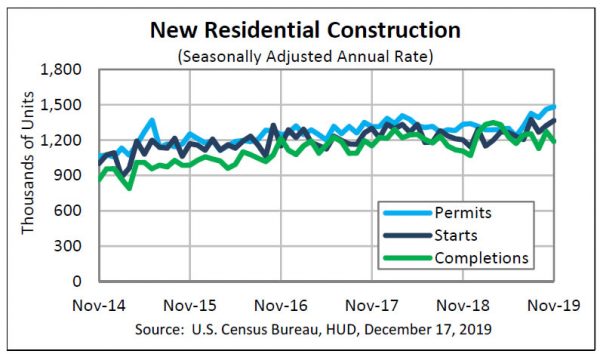
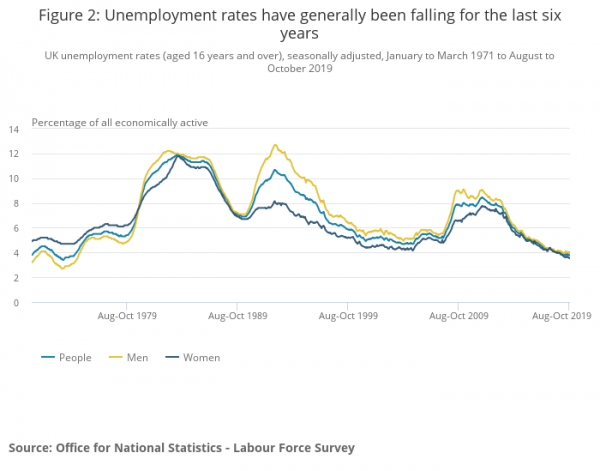
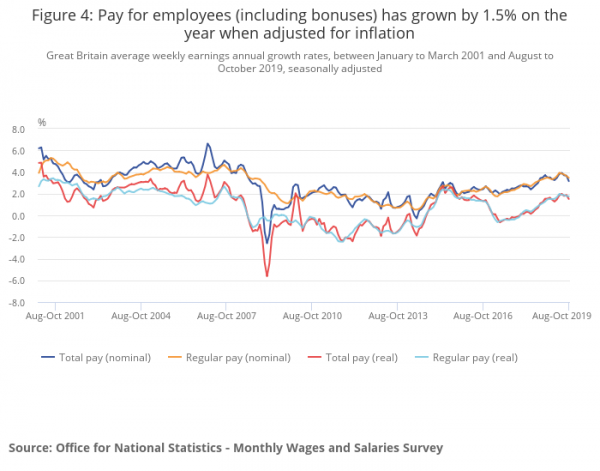
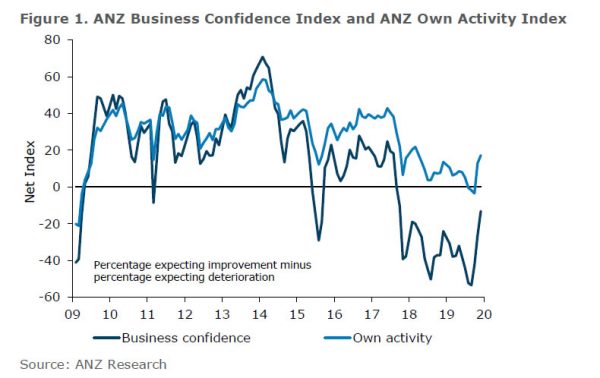
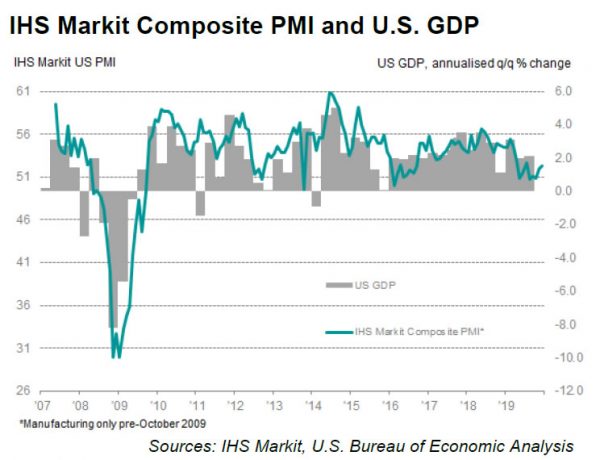
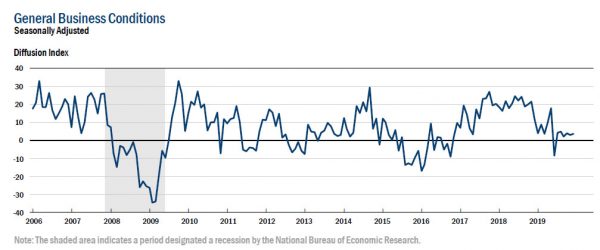
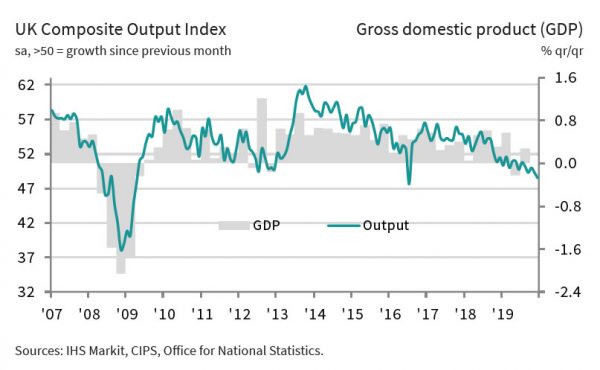
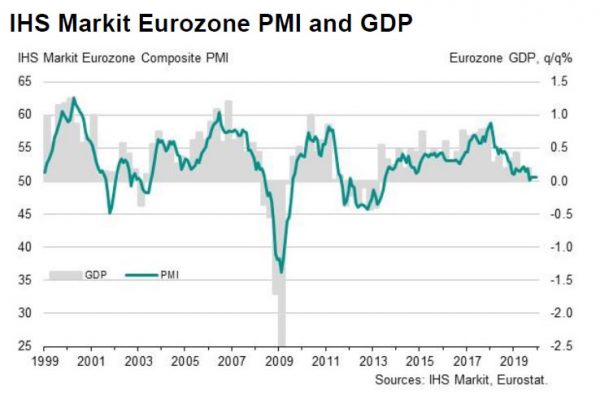
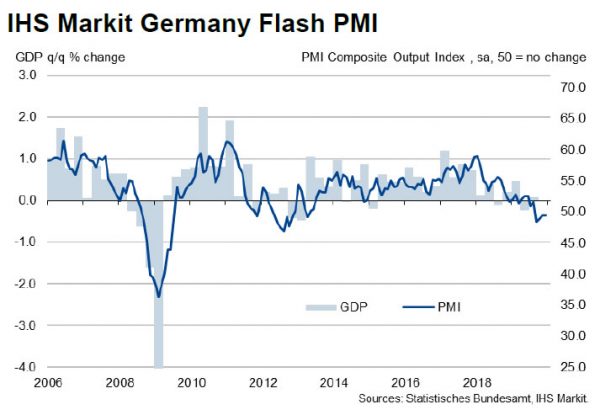
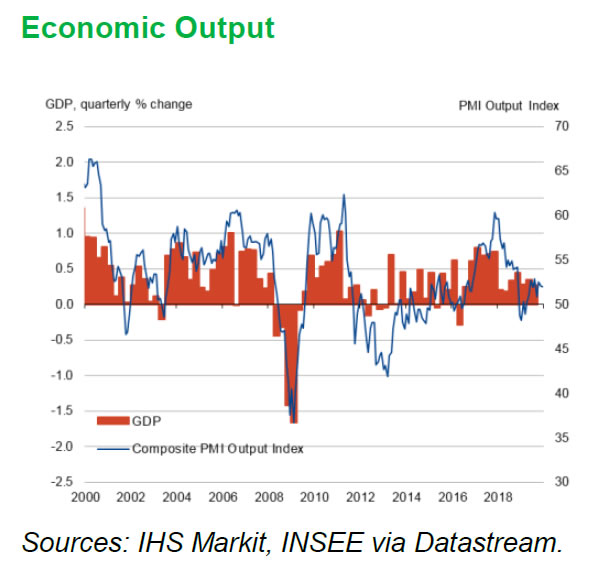
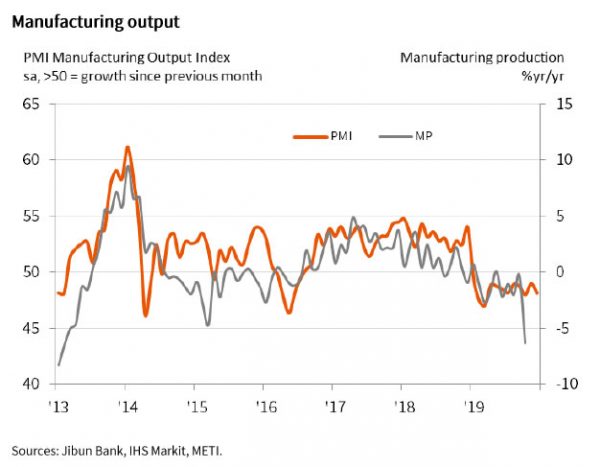
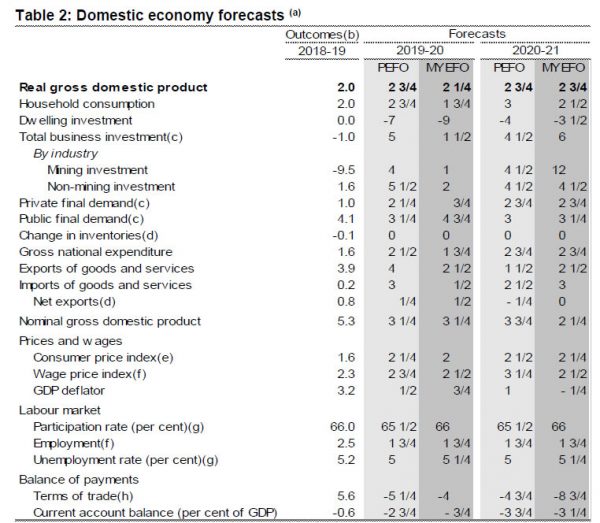
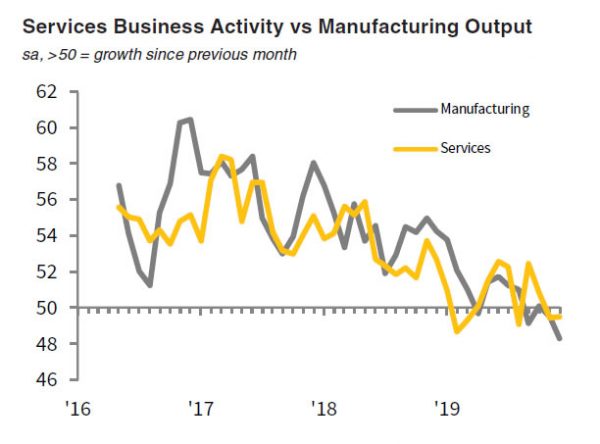

Fed Rosengren and Kaplan thought rates should stay where they are
Boston Fed President Eric Rosengren said yesterday that “the appropriate path of policy is to stay where we are.” He added, “with the recent positive economic news, and with monetary and fiscal policy already accommodative, I see no need to make the current stance of monetary policy more accommodative in the near term.” It’s appropriate to “take a patient approach to considering any policy changes, unless there is a material change in the outlook.””Hopefully this is going to be a boring year for monetary policy”. He had penciled in no change in interest rate through 2020.
On the economy, he said ” it is unlikely we will have an economic downturn in the coming year, given the generally positive financial conditions and the continued accommodative monetary and fiscal policies… Plentiful jobs and growth in income have provided improvements in confidence and bode well for holiday sales and beyond… Fortunately for the economy, many consumers seem to be in a buying mood.”
Separately, Dallas Fed President Robert Kaplan told Bloomberg that “we’re going to have weak manufacturing next year, sluggish global growth, pretty sluggish business investment, but with a strong consumer”. Still, “there would have to be some material change from that outlook” for him to back a rate change.